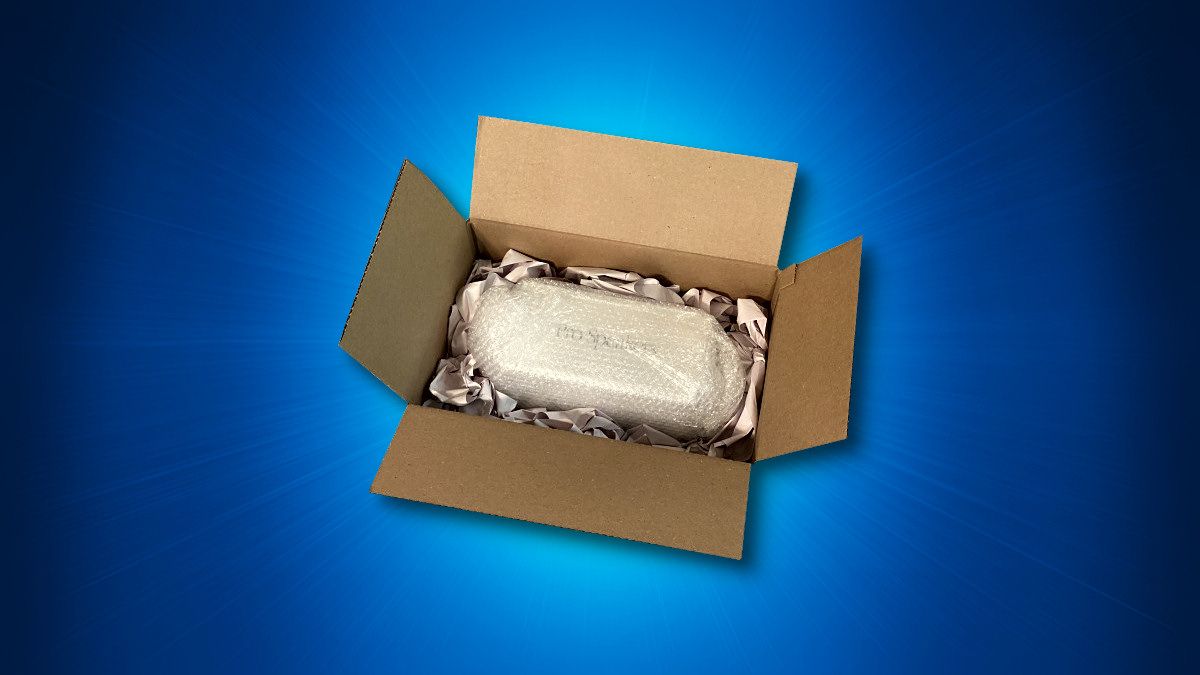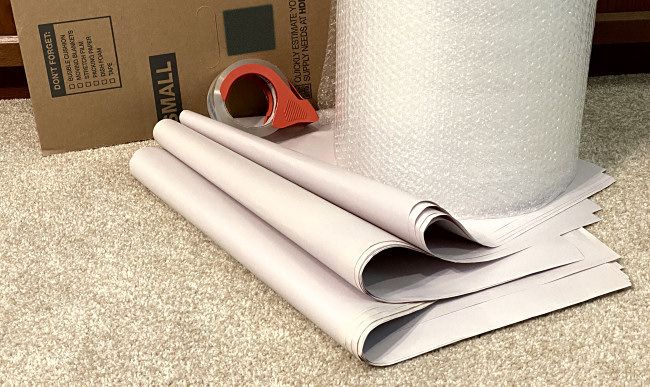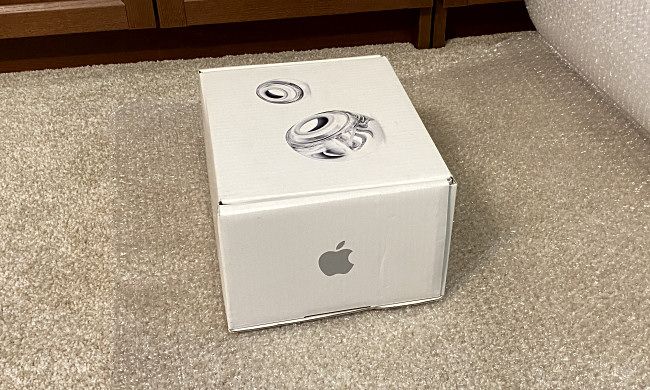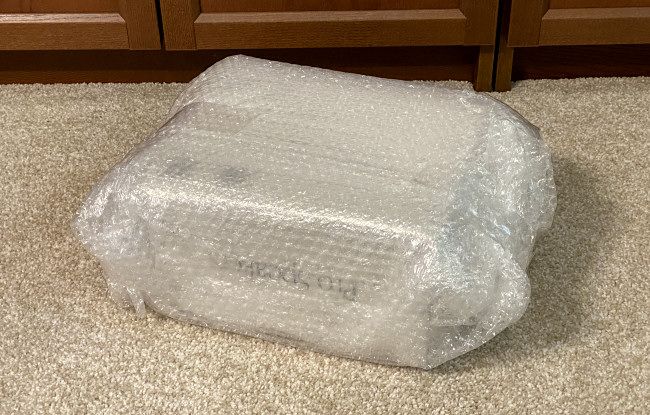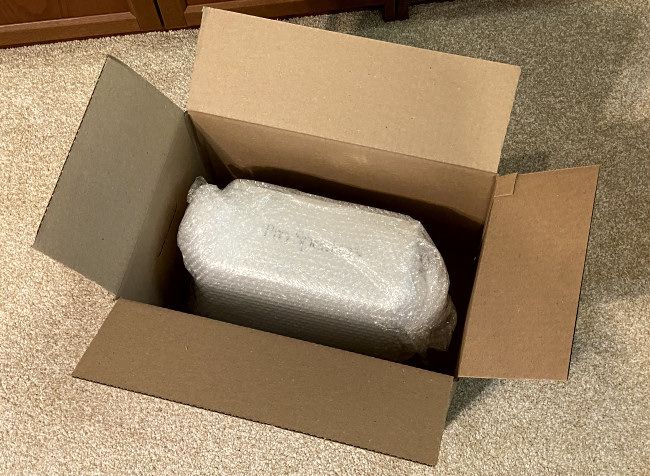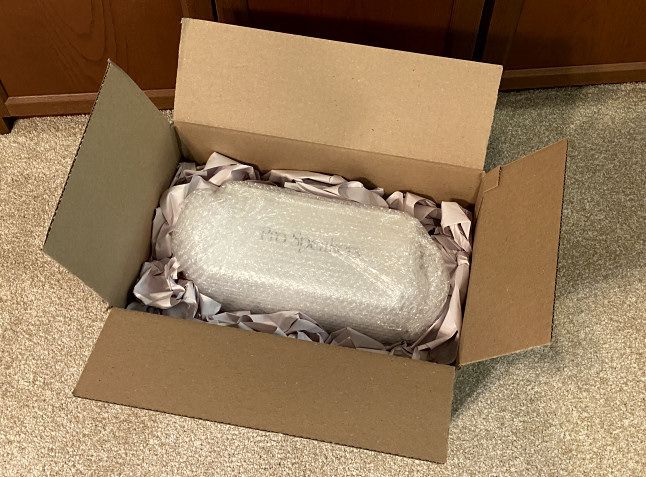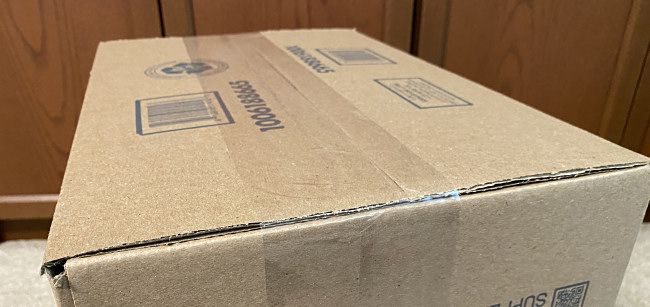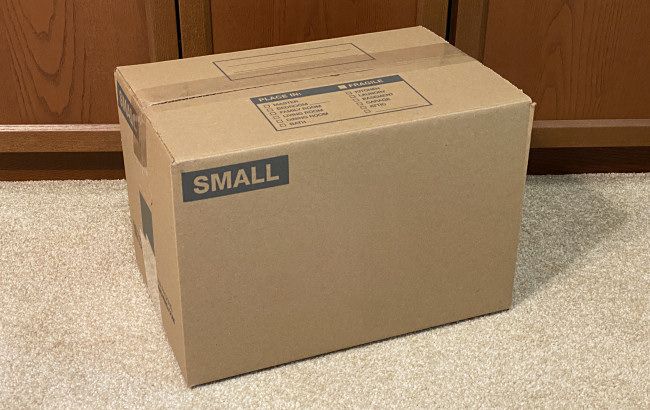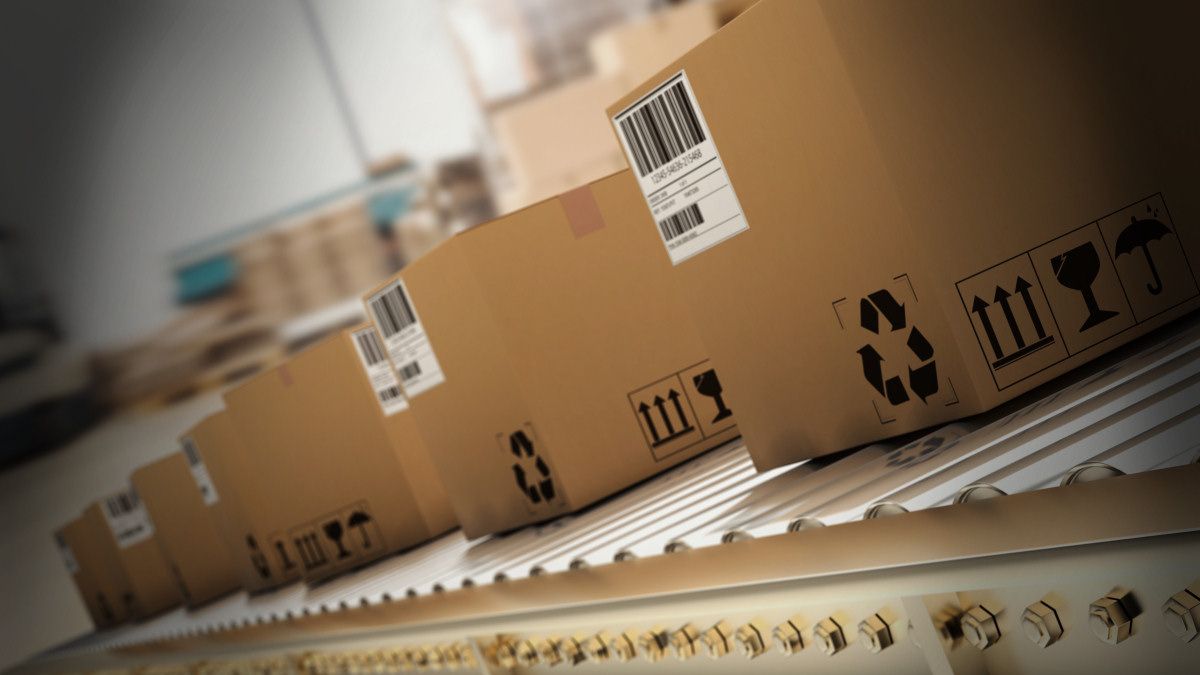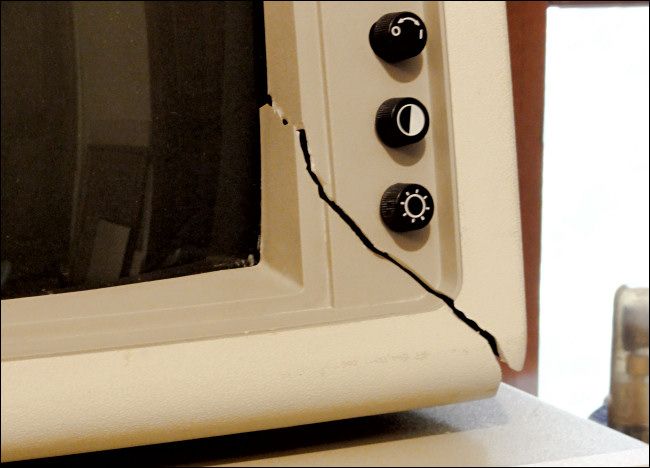Quick Links
If you need to ship something bulky or fragile, such as a computer case, CRT monitor, priceless video game retail box, stereo component, or otherwise, it can be tricky to protect it from damage. We'll show you how.
The Basic Rule: Assume the Worst
To understand safe shipping, you need to understand the conditions under which shipping company employees work every day. They deal with millions of packages and don't have time to gingerly handle your box to make sure nothing inside gets broken.
Instead, in the rush to be productive, shipping carrier employees sometimes end up tossing boxes long distances, dropping them roughly, or perhaps even kicking them around. You have to assume the worst. And a "Fragile" sticker won't help the overworked package sorter or carrier meet their quota faster---in fact, Popular Science found that it might even make them handle it worse.
That means you'll need to pack your box defensively, guarding against very rough handling. Here are the basic forms of damage you'll need to protect against:
- Shock Damage: Internal damage from sudden extreme movements and rapid deceleration.
- Compression Damage: Damage from the box being squeezed. This usually comes from a heavy weight being placed on top of the box, but it can also come from the sides.
- Blunt Force Damage: Something breaking from being directly impacted by another object.
- Scratch Damage: Damage to the surface of the object you're shipping inside the box from abrasion.
- Shearing or Twisting Damage: This is unusual, but it could happen if the box isn't rigid enough.
I've shipped hundreds of fragile items like computers, computer parts, cameras, and video games over the decades, and my personal rule of thumb is that I should be able to drop the box on the ground from waist height and kick the box with moderate force without damaging anything inside. How do you achieve that level of protection? We'll show you.
What You'll Need
To safely ship electronics, you'll need some good-quality shipping materials. Here's an overview:
- A Good Box (or Two): Find a sturdy cardboard box that allows 3-8 inches of clearance of empty space on all sides of the item. You'll fill this space later. More clearance space is needed for heavier items. If you can't fit everything in one box, use two or more boxes to avoid having too little space for padding inside the box. One thing to keep in mind is that generally, shipping services charge more for box volume (overall size) than for extra weight. So adding too much padding (and too big of a box) will keep the item safer, but it will also dramatically add to the shipping cost.
- Packing Tape: Buy high-quality, name-brand packing tape. Gorilla tape is excellent but expensive. If you're shipping many items, you might want to buy Scotch brand instead.
- Bubble Wrap: You'll need enough bubble wrap to cover the item you're shipping in 2-3 layers. Small cell or large cell bubble wrap works, but larger cell bubble wrap is better for heavier items. This protects the surface of the item from getting scratched by the void fill or any other items in the box. It's also backup protection against blunt force damage (if the shipping box gets completely, catastrophically crushed---which sadly happens sometimes).
- Void Fill: You'll need something to fill the empty spaces between the item and the walls of the box, suspending the item in the center. I've found that crumpled paper or newsprint is the best choice. Avoid packing peanuts as much as possible because they allow heavy items to shift around inside the box. Good void fill protects from shock (some slight wiggle room for items to "slow down" more gently inside the box), blunt force to the box, and compression damage.
How to Pack the Item
Now that you have your materials, you'll need to put them all together into a nice, tidy package. How to pack the item can vary dramatically depending on item's size, shape, and weight, so we'll be generalizing here. You'll probably need to customize these instructions for your item as you follow the step-by-step process below.
Prepare the Item
If the item is in its own retail box, fill empty spaces in the box with bubble wrap so nothing rattles around in there. If you're shipping a hollow item like a computer case, you may need to open it and fill the void to prevent components or cards from coming loose and getting damaged from rough handling. It will also make it stronger and less likely to bend or warp if supported gently from the inside. Also, tie up any loose cords and wrap them in their own small section of bubble wrap so connectors don't get damaged or scratch anything else in the box.
Apply Bubble Wrap
Next, wrap the item in 1-3 layers of bubble wrap. Use small bubbles for smaller items, and bigger bubbles for larger items. Heavier items should have more layers of bubble wrap. Tape it in place around the item without getting tape on the item itself. This protects the item from scratches in the box and also adds some blunt force protection as a last line of defense.
If you're shipping multiple items, make sure that each item has enough bubble wrap to protect it from items packed around it in the box. (Avoid packing heavy items near lighter items because they can damage each other in the box. If that's the case, you'll need two boxes.)
Fit and Prepare the Box
Once your item has been wrapped, you'll need to find a sturdy box that is strong and thick enough to hold the item you are shipping. Assemble the box and place the item in the middle of your box, centering it equally from all the walls. The box will need to be big enough to leave 3-8 inches of space between the item and the walls of the box. The amount of free space depends on the weight of the item you're packing. Larger items need more room for shock protection. This gap, once filled, also provides a crumple zone that allows for packing box failure without damaging the item inside. In particular, corners often fail, so it's important to keep the items away from the corners. You want that damage to be absorbed by the void fill and not the item itself.
Once you've found the correct box, tape the box together and reinforce the corners if necessary with extra tape. Leave one end open so you can pack the item inside.
Pack the Item
Remove the centered item and crumple enough newsprint to create a layer at the bottom of the box that will be equal to the layer at the top when you're done. After putting that first layer in place, replace the item in the middle of the box (on top of the newsprint). Crumple more newsprint and pack it evenly around all sides of the box. Fill all available space in the box. This reinforces the box's strength.
If you leave empty space, you're relying on the strength of the box by itself to not crumple under weight. With all voids filled, any forces on the box can be evenly distributed, and the entire package will be stronger. Picture the strength of a balloon that is filled with air and tied closed versus one that is open. The balloon gets rigidity from its compressed contents forcing its walls outward, and a well-packed shipping box is much the same.
Close the Box
After you've stuffed newsprint up to the brim of the box, fold the flaps closed and hold them down squarely while you tape across the seam, closing the box. If the item is light, you can probably only use one strap of tape for the main joints. For heavier items, add two or three straps of tape. For the heaviest items, add straps of tape for every open seam on the box. Be sure to leave enough tape on the sides of the box to hold the box lid closed (proportional to box size). The more surface area the tape can grip on to, the stronger it will hold.
Do a Stress Test
When you're done taping up the box, pick it up and shake it. You should hear silence. Any rattling sounds means something inside is insecure and could get damaged from shock (sudden, sharp movements) during handling.
After an ideal packing job, you should be able to drop the box 2-3 feet and kick it moderately hard with no damage to the item inside. Trust us: The box will get far rougher treatment on the way to the destination address. After some experience shipping more items, you'll find that the goal of an ideal packing job is to pack the smallest possible box for the item while still being able to pass this stress test. It's a tricky balance to obtain.
Why Isn't Packing Usually This Good?
By now, if you haven't shipped anything before, you might be thinking this method is overkill. After all, if you've ordered electronics through the mail or shipping services, you'll probably notice that commercially shipped items usually don't come that well protected. Sure, you'll find the basics in place, but nothing like the padding and protection you see here.
The difference between you and a company that mass produces retail goods is that they ship thousands of items every day, and they need to reduce costs in transportation, storage, and shipping by keeping product shipping materials to a minimum. For example, in 2022, Nintendo reduced the size of its Switch console box to decrease supply chain costs like these. Big companies can afford to take losses on a few items that get damaged in shipping if they save millions of dollars a year by skimping on packing materials.
Another important component of this situation is that companies often have hundreds or thousands of the same item available to replace any items that get damaged (and remember, they only lose the raw production price or wholesale price of the damaged item, not the retail price). They can easily ship another item out again if the first one gets damaged in shipping. In contrast, if you're shipping a unique item you own, you only get one chance at a successful shipment, so it's important to take proper steps to protect it.
Here, the rise of companies like Amazon with "free shipping" and minimal padding has really confused people about proper packing methods. If you buy a poorly-packed item from eBay that arrives in perfect condition, you got lucky. Many items end up damaged in shipping because there is significant pressure from buyers to keep shipping costs to an absolute minimum. Good shipping is expensive, because good packing adds a lot of volume to the package. If you want to receive a rare item intact from eBay, go for the seller with higher shipping prices, not lower ones. It's worth it.
A Final Tip: Shipping Insurance Helps a Lot
After packing the item, the choice of shipping carrier is up to you. Each company has its own benefits and trade-offs that are too complex to go into here. But there is one universal truth, no matter which carrier you choose: Insure your item---but not for the reason you might think.
Over the years, I've heard from several employees at different shipping carriers that if you insure a package for any amount, the package often gets special treatment because the handlers can be personally liable if something gets broken.
So if you have a chance to get insurance, add it, even if it doesn't cover the full amount of the item. It will make the carriers less likely to punt your computer package onto your porch from 10 feet away.
For high-value items, always insure to the full price, but know that claiming insurance (actually getting your money back for a damaged item) can be very tricky depending on the carrier. Ultimately, good packing is the best kind of insurance because, if a rare item is damaged in transit, no amount of insurance will bring it back. Good luck, and stay safe out there!

